
Himself (voice)

Self
Werner Schroeter was one of the most significant proponents of New German Cinema. Schroeter was diagnosed with cancer in 2006. In her film, Elfi Mikesch, who photographed a number of Schroeter’s films and who collaborated closely with him to create his vision, provides us with an intimate insight into Schroeter’s artistic output during the remaining four years of his life.

Himself
"On the occasion of the premiere of Nel Regno di Napoli in Cannes in 1978, Werner Schroeter gave me an audio interview about this film and about his work in general. Our meeting took place on the terrace of the Hotel Majestic, in the midst of excitement of the Cannes festival life, a few days after the screening of Nel Regno di Napoli and in the presence of the photographer Jean-Claude Moireau. Vivre à Naples et mourir is the audio capture of that informal meeting that happened on 20 May 1978 and which is, as per director's wish, more like a casual conversation than an interview in the strict sense of the term (a set of questions and answers).

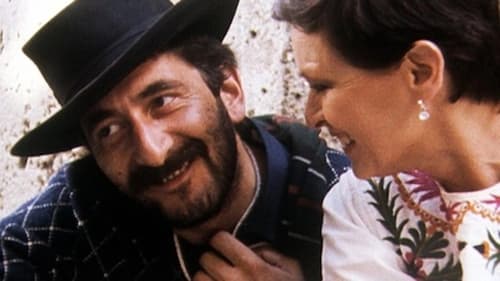
Self
When director Daniel Schmid grew up, his parents ran a hotel in the Alps, and this singular setting was to influence his film. Rather by coincidence he came to Berlin in the early 1960s and became part of the new German wave. Schmid worked with, among others, Wenders and Fassbinder, for example as an actor in Wender’s The American Friend. He met Ingrid Caven, who was to play a diva in several of his films. This is a documentation of a part of modern European film history and a good analysis of artistry and how it corresponds to the individual behind the camera. A wealth of archival footage brings us close to many directors and actors in Schmid’s circle. If you’ve never seen a Daniel Schmid film, you are sure to want to after watching this portrait of his life.

Klaus Wyborny's Das letzte Jahr is a take on Ovid's "Fasti" in three parts. Yet, "a character as confused as our protagonist hardly would have been able to write the first three. For that it needs a clearer head, and thus one essentially would have to be even more confused. In this respect, the fourth book would have to be about me, my humble self."

Screenplay
Estação de Santamaria à noite. Ossorio, homem dos seus quarenta anos, sai de um comboio, por entre uma multidão de refugiados e de soldados derreados. É numa cidade sitiada que este herói de uma resistência em fuga tenta reencontrar os seus antigos aliados e aquela que ama. Mas a situação agora é outra, e os amigos de ontem já não têm o mesmo discurso. Enquanto uma milícia desenfreada aterroriza a cidade, cada um só quer é salvar a própria vida.

Director
Estação de Santamaria à noite. Ossorio, homem dos seus quarenta anos, sai de um comboio, por entre uma multidão de refugiados e de soldados derreados. É numa cidade sitiada que este herói de uma resistência em fuga tenta reencontrar os seus antigos aliados e aquela que ama. Mas a situação agora é outra, e os amigos de ontem já não têm o mesmo discurso. Enquanto uma milícia desenfreada aterroriza a cidade, cada um só quer é salvar a própria vida.
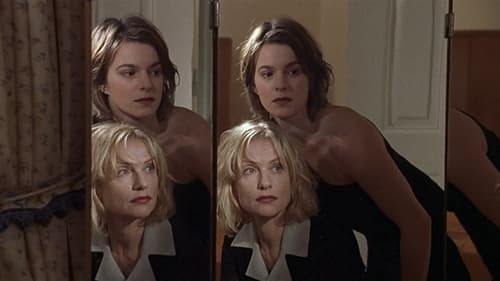
Screenplay
After reading a postcard that her mother let go in the wind, a woman learns that she has a twin.

Director
After reading a postcard that her mother let go in the wind, a woman learns that she has a twin.

Director
Werner Schroeter's lovely and touching portrait of the great German actress Marianne Hoppe, whose career spanned from the glory days of the Weimar era through the Nazi years to a postwar return to the stage in Shakespeare, Tennessee Williams, and experimental productions by Robert Wilson and Heiner Müller.

Screenplay
Werner Schroeter's lovely and touching portrait of the great German actress Marianne Hoppe, whose career spanned from the glory days of the Weimar era through the Nazi years to a postwar return to the stage in Shakespeare, Tennessee Williams, and experimental productions by Robert Wilson and Heiner Müller.

Director
German director Werner Schroeter invited his favourite opera singers to a 13th century abbey near Paris. There was no pre-planned action. There was no script, no continuity. On the other hand, there were precise constraints that provided the rules of the game: the setting, the Abbey of Royaumont, and the chosen participants. Each singer came accompanied by a person of his or her choice, and worked on an aria chosen by the director.
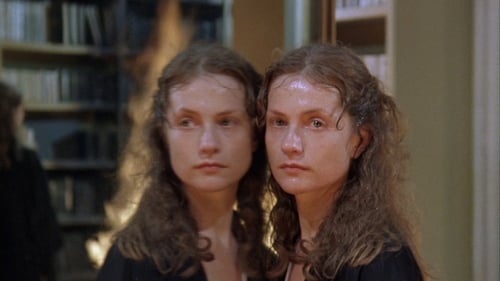
Director
Ambientado em Vienna, o filme narra a forma como a vida de uma escritora é tomada pela autodestruição ao ser dividida entre seu marido e seu amante. Isabelle Huppert é a estrela na adaptação de Werner Schroeter do romance de Ingeborg Bachmann, coescrito por Elfriede Jelinek (A Professora de Piano)
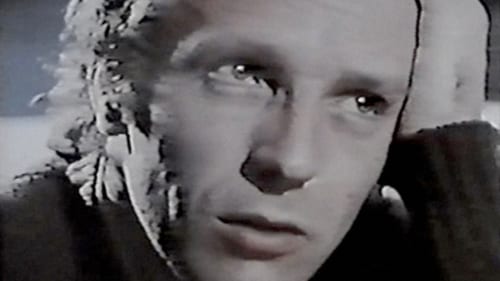
Self
Philippe Garrel’s documentary on France’s second wave of masterful filmmakers. Featuring Jean Eustache, Chantal Akerman, André Téchiné, Leos Carax, Jacques Doillon and Benoit Jacquot.

Writer
Schroeter casts his tutored eye on Mnouchkine, the legendary founder of the avant-garde Théâtre du Soleil, with whom he shared an affinity for collage and pastiche, improvisation and distillation, ancient Greek drama, commedia dell’arte, opera, and Asian traditions of theater and dance. In this fascinating study of the creative process, Mnouchkine is seen directing her company in a revival of 1789, her defining political work, along with her 1977 film Molière and the theatrical premiere of Hélène Cixous’s The Horrific and as Yet Unfinished Story of Norodom Sihanouk, King of Cambodia. - MoMA

Director
Schroeter casts his tutored eye on Mnouchkine, the legendary founder of the avant-garde Théâtre du Soleil, with whom he shared an affinity for collage and pastiche, improvisation and distillation, ancient Greek drama, commedia dell’arte, opera, and Asian traditions of theater and dance. In this fascinating study of the creative process, Mnouchkine is seen directing her company in a revival of 1789, her defining political work, along with her 1977 film Molière and the theatrical premiere of Hélène Cixous’s The Horrific and as Yet Unfinished Story of Norodom Sihanouk, King of Cambodia. - MoMA

Writer
Numa praia do Mediterrâneo vivem uma mulher e o seu filho adulto Albert. Albert, que deseja o jovem Fernando, rapta-o, aprisiona-o e começa a controlar-lhe a vida, dando-lhe banho e alimentando-o com as rosas perfeitas que ele cultivou...

Director
Numa praia do Mediterrâneo vivem uma mulher e o seu filho adulto Albert. Albert, que deseja o jovem Fernando, rapta-o, aprisiona-o e começa a controlar-lhe a vida, dando-lhe banho e alimentando-o com as rosas perfeitas que ele cultivou...

Cinematography
Documentary on State terrorism during the last military dictatorship in Argentina, made in its aftermath. Invited by the Goethe-Institut to hold a workshop with young film students, Schroeter contrasts the official statements of the regime with the testimony of victims, dissidents and relatives of the disappeared. And trust that their faces and words will resonate much more than a mere representation of violence.

Director
Documentary on State terrorism during the last military dictatorship in Argentina, made in its aftermath. Invited by the Goethe-Institut to hold a workshop with young film students, Schroeter contrasts the official statements of the regime with the testimony of victims, dissidents and relatives of the disappeared. And trust that their faces and words will resonate much more than a mere representation of violence.

Director of Photography
One of the most caustic and personal essay films ever made, Werner Schroeter's account of the 1983 Manila Film Festival, presided over by Imelda Marcos, chronicles the legacy of American and Spanish imperialism as it presents a "kaleidoscope of a ravaged country."

Editor
One of the most caustic and personal essay films ever made, Werner Schroeter's account of the 1983 Manila Film Festival, presided over by Imelda Marcos, chronicles the legacy of American and Spanish imperialism as it presents a "kaleidoscope of a ravaged country."

Screenplay
One of the most caustic and personal essay films ever made, Werner Schroeter's account of the 1983 Manila Film Festival, presided over by Imelda Marcos, chronicles the legacy of American and Spanish imperialism as it presents a "kaleidoscope of a ravaged country."

Director
One of the most caustic and personal essay films ever made, Werner Schroeter's account of the 1983 Manila Film Festival, presided over by Imelda Marcos, chronicles the legacy of American and Spanish imperialism as it presents a "kaleidoscope of a ravaged country."
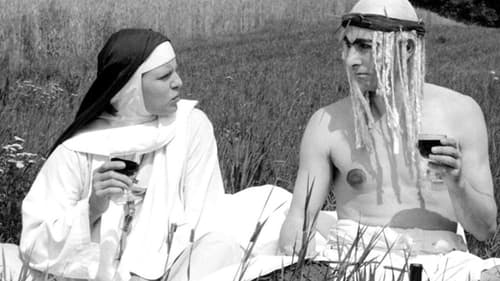
Bischof
Jesus (played by the director) returns to present-day Bavaria, walks around Munich in a somewhat dazed manner and strikes up an affair with a nun, arguing that they are married anyway. Therefore, he refers to himself as "Ober" (waiter), obviously the male form of "Oberin" (Mother Superior). He occasionally transforms into a snake when being afraid and is finally carried up into the sky by the nun, who transforms into a bird of prey. (IMDB review)

Director
Oskar Panizza’s The Council of Love (1895) is a blasphemous play set in 1495, during the first recorded outbreak of syphilis, which Panizza satirically presents as the punishment from Satan for sexually active humans. As a result, Panizza was imprisoned for obscenity. Schroeter alternates scenes from the Panizza’s work with a dramatization of his trial, presenting the play as an expressionist spectacle performed by actors wearing exaggerated makeup who gesture and grimace grotesquely. The film thus forms a bridge between Schroeter’s use of tableaux in his early experiments with the political urgency of his 1980s films. On the eve of the AIDS crisis, Schroeter is presciently worried about disease as an excuse for governmental repression and the oppression of sexuality. - Harvard Film Archive

Author
A woman experiences psychic disintegration and ends up in a psychiatric hospital.

Director
A woman experiences psychic disintegration and ends up in a psychiatric hospital.

Screenplay
An exhilarating, essayistic documentary about the 1980 festival of experimental theatre in the French city of Nancy. Werner Schroeter's favourite of his own films.

Director
An exhilarating, essayistic documentary about the 1980 festival of experimental theatre in the French city of Nancy. Werner Schroeter's favourite of his own films.

Editor
One of Werner Schroeter's most important and inventive works, this threadbare evocation of Jean Genet's notorious Querelle depicts the erotic adventures of two sailors through the world's seaports in the manner of a cut-rate silent movie.

Cinematography
One of Werner Schroeter's most important and inventive works, this threadbare evocation of Jean Genet's notorious Querelle depicts the erotic adventures of two sailors through the world's seaports in the manner of a cut-rate silent movie.

Sound
One of Werner Schroeter's most important and inventive works, this threadbare evocation of Jean Genet's notorious Querelle depicts the erotic adventures of two sailors through the world's seaports in the manner of a cut-rate silent movie.

One of Werner Schroeter's most important and inventive works, this threadbare evocation of Jean Genet's notorious Querelle depicts the erotic adventures of two sailors through the world's seaports in the manner of a cut-rate silent movie.

Screenplay
One of Werner Schroeter's most important and inventive works, this threadbare evocation of Jean Genet's notorious Querelle depicts the erotic adventures of two sailors through the world's seaports in the manner of a cut-rate silent movie.

Director
One of Werner Schroeter's most important and inventive works, this threadbare evocation of Jean Genet's notorious Querelle depicts the erotic adventures of two sailors through the world's seaports in the manner of a cut-rate silent movie.

Editor
An impoverished young man from Sicily travels to Wolfsburg, West Germany to find work. He takes a job in the Volkswagen factory after he travels through Northern Italy by train.

Writer
An impoverished young man from Sicily travels to Wolfsburg, West Germany to find work. He takes a job in the Volkswagen factory after he travels through Northern Italy by train.

Director
An impoverished young man from Sicily travels to Wolfsburg, West Germany to find work. He takes a job in the Volkswagen factory after he travels through Northern Italy by train.

Cinematography
Personal diary-style documentary of German Gay rights activist Von Praunheim's sojourn in the US.

Editor
Cahiers du cinéma critic Serge Daney asks whether The Kingdom of Naples is "leftist fiction, kitschy melodrama, photo-roman, a decadent chronicle of a city, opera in a minor key, or simply the first realistic narrative film by Schroeter?" It is all of these and more: an epic chronicle of proletarian family life in Naples from 1943 to 1972 that brilliantly captures the wretched poverty, overwrought passions, and political, religious and economic upheavals of Sicily across two generations. Schroeter assimilates neorealist aesthetics and class sympathies with the tempestuous excesses of popular melodrama, borrowing freely from Rossellini, Pasolini, Visconti, Brecht, and Rossini. (Facets)

Writer
Cahiers du cinéma critic Serge Daney asks whether The Kingdom of Naples is "leftist fiction, kitschy melodrama, photo-roman, a decadent chronicle of a city, opera in a minor key, or simply the first realistic narrative film by Schroeter?" It is all of these and more: an epic chronicle of proletarian family life in Naples from 1943 to 1972 that brilliantly captures the wretched poverty, overwrought passions, and political, religious and economic upheavals of Sicily across two generations. Schroeter assimilates neorealist aesthetics and class sympathies with the tempestuous excesses of popular melodrama, borrowing freely from Rossellini, Pasolini, Visconti, Brecht, and Rossini. (Facets)

Director
Cahiers du cinéma critic Serge Daney asks whether The Kingdom of Naples is "leftist fiction, kitschy melodrama, photo-roman, a decadent chronicle of a city, opera in a minor key, or simply the first realistic narrative film by Schroeter?" It is all of these and more: an epic chronicle of proletarian family life in Naples from 1943 to 1972 that brilliantly captures the wretched poverty, overwrought passions, and political, religious and economic upheavals of Sicily across two generations. Schroeter assimilates neorealist aesthetics and class sympathies with the tempestuous excesses of popular melodrama, borrowing freely from Rossellini, Pasolini, Visconti, Brecht, and Rossini. (Facets)

Himself
Vivre à Naples et Mourir (Entretien avec Werner Schroeter) is the sound recording of this informal meeting, which took place on 20 May 1978 and which, as the filmmaker wished, is closer to a casual conversation than to an interview in the strict sense of the term with its game of questions and answers. In a second phase, I put this soundtrack into images using photos, posters, programmes, extracts from Werner Schroeter's films as well as collages created for the occasion.

Producer
Werner Schroeter's rhapsody of excess leaps from 1949 Cuba to contemporary France to points in between, while its feverishly shifting visual style evokes and parodies everything from kitschy Mexican telenovelas to silent French art films.

Editor
Werner Schroeter's rhapsody of excess leaps from 1949 Cuba to contemporary France to points in between, while its feverishly shifting visual style evokes and parodies everything from kitschy Mexican telenovelas to silent French art films.

Director of Photography
Werner Schroeter's rhapsody of excess leaps from 1949 Cuba to contemporary France to points in between, while its feverishly shifting visual style evokes and parodies everything from kitschy Mexican telenovelas to silent French art films.

Screenplay
Werner Schroeter's rhapsody of excess leaps from 1949 Cuba to contemporary France to points in between, while its feverishly shifting visual style evokes and parodies everything from kitschy Mexican telenovelas to silent French art films.

Director
Werner Schroeter's rhapsody of excess leaps from 1949 Cuba to contemporary France to points in between, while its feverishly shifting visual style evokes and parodies everything from kitschy Mexican telenovelas to silent French art films.

Cinematography
With the ascetic grandeur of Carl Th. Dreyer’s The Passion of Joan of Arc, Schroeter evokes the visions of Saint Joan, partly through unused footage of Darling and Caven pantomiming in his 1972 film The Death of Maria Malibran. - MoMA

Writer
With the ascetic grandeur of Carl Th. Dreyer’s The Passion of Joan of Arc, Schroeter evokes the visions of Saint Joan, partly through unused footage of Darling and Caven pantomiming in his 1972 film The Death of Maria Malibran. - MoMA

Director
With the ascetic grandeur of Carl Th. Dreyer’s The Passion of Joan of Arc, Schroeter evokes the visions of Saint Joan, partly through unused footage of Darling and Caven pantomiming in his 1972 film The Death of Maria Malibran. - MoMA

Editor
Two women, one from Boston and one from Germany, flee their empty lives to seek fulfillment in Mexico. The Black Angel is a transitional film; on one hand, it is a companion piece to Willow Springs, featuring two Schroeter regulars as characters far from home and in extremis; on the other hand, it is a film essay about Mexico and as such a harbinger of Schroeter’s nonfiction work to come. While he clearly shares his characters’ fascination with Mexico, the filmmaker also savages touristic exoticism – the otherworldly appearances of his protagonists and their rapturous reactions to new surroundings contrast sharply with the sober perceptions of Mexican history and economics featured in the documentary segments and in the prosaic presence of a non-professional cast of locals. - Harvard Film Archive

Producer
Two women, one from Boston and one from Germany, flee their empty lives to seek fulfillment in Mexico. The Black Angel is a transitional film; on one hand, it is a companion piece to Willow Springs, featuring two Schroeter regulars as characters far from home and in extremis; on the other hand, it is a film essay about Mexico and as such a harbinger of Schroeter’s nonfiction work to come. While he clearly shares his characters’ fascination with Mexico, the filmmaker also savages touristic exoticism – the otherworldly appearances of his protagonists and their rapturous reactions to new surroundings contrast sharply with the sober perceptions of Mexican history and economics featured in the documentary segments and in the prosaic presence of a non-professional cast of locals. - Harvard Film Archive

Director of Photography
Two women, one from Boston and one from Germany, flee their empty lives to seek fulfillment in Mexico. The Black Angel is a transitional film; on one hand, it is a companion piece to Willow Springs, featuring two Schroeter regulars as characters far from home and in extremis; on the other hand, it is a film essay about Mexico and as such a harbinger of Schroeter’s nonfiction work to come. While he clearly shares his characters’ fascination with Mexico, the filmmaker also savages touristic exoticism – the otherworldly appearances of his protagonists and their rapturous reactions to new surroundings contrast sharply with the sober perceptions of Mexican history and economics featured in the documentary segments and in the prosaic presence of a non-professional cast of locals. - Harvard Film Archive

Writer
Two women, one from Boston and one from Germany, flee their empty lives to seek fulfillment in Mexico. The Black Angel is a transitional film; on one hand, it is a companion piece to Willow Springs, featuring two Schroeter regulars as characters far from home and in extremis; on the other hand, it is a film essay about Mexico and as such a harbinger of Schroeter’s nonfiction work to come. While he clearly shares his characters’ fascination with Mexico, the filmmaker also savages touristic exoticism – the otherworldly appearances of his protagonists and their rapturous reactions to new surroundings contrast sharply with the sober perceptions of Mexican history and economics featured in the documentary segments and in the prosaic presence of a non-professional cast of locals. - Harvard Film Archive

Director
Two women, one from Boston and one from Germany, flee their empty lives to seek fulfillment in Mexico. The Black Angel is a transitional film; on one hand, it is a companion piece to Willow Springs, featuring two Schroeter regulars as characters far from home and in extremis; on the other hand, it is a film essay about Mexico and as such a harbinger of Schroeter’s nonfiction work to come. While he clearly shares his characters’ fascination with Mexico, the filmmaker also savages touristic exoticism – the otherworldly appearances of his protagonists and their rapturous reactions to new surroundings contrast sharply with the sober perceptions of Mexican history and economics featured in the documentary segments and in the prosaic presence of a non-professional cast of locals. - Harvard Film Archive

Editor
Três mulheres retiram-se para uma fazenda no deserto de Mojave e vingativamente atraem homens às suas mortes ao som da canção de sirene "Rum And Coca-Cola" das Andrews Sisters, na sublimemente estranha febre de filme de Werner Schroeter.

Sound Designer
Três mulheres retiram-se para uma fazenda no deserto de Mojave e vingativamente atraem homens às suas mortes ao som da canção de sirene "Rum And Coca-Cola" das Andrews Sisters, na sublimemente estranha febre de filme de Werner Schroeter.

Director of Photography
Três mulheres retiram-se para uma fazenda no deserto de Mojave e vingativamente atraem homens às suas mortes ao som da canção de sirene "Rum And Coca-Cola" das Andrews Sisters, na sublimemente estranha febre de filme de Werner Schroeter.

Producer
Três mulheres retiram-se para uma fazenda no deserto de Mojave e vingativamente atraem homens às suas mortes ao som da canção de sirene "Rum And Coca-Cola" das Andrews Sisters, na sublimemente estranha febre de filme de Werner Schroeter.

Screenplay
Três mulheres retiram-se para uma fazenda no deserto de Mojave e vingativamente atraem homens às suas mortes ao som da canção de sirene "Rum And Coca-Cola" das Andrews Sisters, na sublimemente estranha febre de filme de Werner Schroeter.

Director
Três mulheres retiram-se para uma fazenda no deserto de Mojave e vingativamente atraem homens às suas mortes ao som da canção de sirene "Rum And Coca-Cola" das Andrews Sisters, na sublimemente estranha febre de filme de Werner Schroeter.
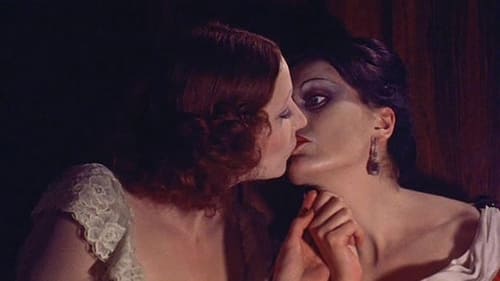
Editor
Werner Schroeter mixes Stravinsky, Beethoven, Brahms, Maria Callas and Janis Joplin in this delirious biography of the doomed nineteenth-century mezzo-soprano.

Director of Photography
Werner Schroeter mixes Stravinsky, Beethoven, Brahms, Maria Callas and Janis Joplin in this delirious biography of the doomed nineteenth-century mezzo-soprano.

Producer
Werner Schroeter mixes Stravinsky, Beethoven, Brahms, Maria Callas and Janis Joplin in this delirious biography of the doomed nineteenth-century mezzo-soprano.

Screenplay
Werner Schroeter mixes Stravinsky, Beethoven, Brahms, Maria Callas and Janis Joplin in this delirious biography of the doomed nineteenth-century mezzo-soprano.

Director
Werner Schroeter mixes Stravinsky, Beethoven, Brahms, Maria Callas and Janis Joplin in this delirious biography of the doomed nineteenth-century mezzo-soprano.

Writer
Fusing Shakespeare‘s tragedy with the Verdi opera, Schroeter's Macbeth is a fascinating television experiment shot entirely in a studio with several electronic cameras. As Schroeter would recall, "I arranged the Verdi music for a quartet of violin, accordion, piano and oboe, but modeled the rhythms on Argentinian tangos and boleros. The actors sang with horrifying, shrill voices.... The use of video allowed me to produce extraordinary colors.... Of all my films, Macbeth was most unwelcome: Audiences don’t like their Shakespeare to be presented in this way, but I do not differentiate between kitsch and culture...". - MoMA

Director
Fusing Shakespeare‘s tragedy with the Verdi opera, Schroeter's Macbeth is a fascinating television experiment shot entirely in a studio with several electronic cameras. As Schroeter would recall, "I arranged the Verdi music for a quartet of violin, accordion, piano and oboe, but modeled the rhythms on Argentinian tangos and boleros. The actors sang with horrifying, shrill voices.... The use of video allowed me to produce extraordinary colors.... Of all my films, Macbeth was most unwelcome: Audiences don’t like their Shakespeare to be presented in this way, but I do not differentiate between kitsch and culture...". - MoMA

Collage of dramatic scenes, some exaggerated to comic effect, with asynchronous sound from well known classic, operatic, and rock and roll music – with different approaches to love, suffering, and death.

Producer
Collage of dramatic scenes, some exaggerated to comic effect, with asynchronous sound from well known classic, operatic, and rock and roll music – with different approaches to love, suffering, and death.

Cinematography
Collage of dramatic scenes, some exaggerated to comic effect, with asynchronous sound from well known classic, operatic, and rock and roll music – with different approaches to love, suffering, and death.

Editor
Collage of dramatic scenes, some exaggerated to comic effect, with asynchronous sound from well known classic, operatic, and rock and roll music – with different approaches to love, suffering, and death.

Writer
Collage of dramatic scenes, some exaggerated to comic effect, with asynchronous sound from well known classic, operatic, and rock and roll music – with different approaches to love, suffering, and death.

Director
Collage of dramatic scenes, some exaggerated to comic effect, with asynchronous sound from well known classic, operatic, and rock and roll music – with different approaches to love, suffering, and death.
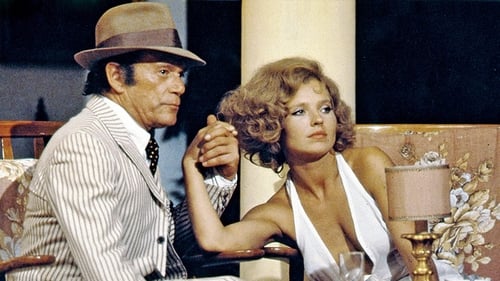
Deiters
Tensions between members of a film crew build while they wait for the arrival of the director and star to arrive on location.

Director
Schroeter's virtuosic staging of the Oscar Wilde tragedy is a complex montage of image and sound, filmed on the grand steps of Baalbeck, the ancient Roman temple in Lebanon, and interweaving Lebanese and German folk songs with the music of Verdi, Wagner, Strauss, Mozart, Bellini, and Donizetti. Elfi Mikesch, the cinematographer of Schroeter’s later films, designed the film’s sumptuous costumes. A contemporary critic for Le Monde wrote admiringly of Schroeter’s depiction of "the deadly struggle between dark Christian morality and luminous paganism.“

Screenplay
Schroeter's virtuosic staging of the Oscar Wilde tragedy is a complex montage of image and sound, filmed on the grand steps of Baalbeck, the ancient Roman temple in Lebanon, and interweaving Lebanese and German folk songs with the music of Verdi, Wagner, Strauss, Mozart, Bellini, and Donizetti. Elfi Mikesch, the cinematographer of Schroeter’s later films, designed the film’s sumptuous costumes. A contemporary critic for Le Monde wrote admiringly of Schroeter’s depiction of "the deadly struggle between dark Christian morality and luminous paganism.“
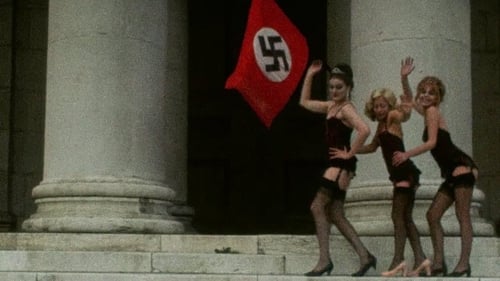
Editor
Schroeter’s film is a chronicle of Germany from the Nazi era until the economic boom of the 1950s and 1960s, centering on three women who search for a career as singers and dancers.

Director of Photography
Schroeter’s film is a chronicle of Germany from the Nazi era until the economic boom of the 1950s and 1960s, centering on three women who search for a career as singers and dancers.

Schroeter’s film is a chronicle of Germany from the Nazi era until the economic boom of the 1950s and 1960s, centering on three women who search for a career as singers and dancers.

Screenplay
Schroeter’s film is a chronicle of Germany from the Nazi era until the economic boom of the 1950s and 1960s, centering on three women who search for a career as singers and dancers.

Director
Schroeter’s film is a chronicle of Germany from the Nazi era until the economic boom of the 1950s and 1960s, centering on three women who search for a career as singers and dancers.

Feminist short film set in West Berlin.

Cinematography
Werner Schroeter's stunning split-screen short deals with what the director called "archaic, fundamental themes" of love and mourning.

Editor
Werner Schroeter's stunning split-screen short deals with what the director called "archaic, fundamental themes" of love and mourning.

Editor
In a dark and spare theatrical space, four characters use gesture, language, and movement to explore themes of desire and mortality.

Cinematography
In a dark and spare theatrical space, four characters use gesture, language, and movement to explore themes of desire and mortality.

Producer
In a dark and spare theatrical space, four characters use gesture, language, and movement to explore themes of desire and mortality.

Screenplay
Werner Schroeter's stunning split-screen short deals with what the director called "archaic, fundamental themes" of love and mourning.

Director
Werner Schroeter's stunning split-screen short deals with what the director called "archaic, fundamental themes" of love and mourning.

Director
In a dark and spare theatrical space, four characters use gesture, language, and movement to explore themes of desire and mortality.

"The film starts with a shot of a cassette recorder, and it has a juke box in it. There’s always music in it. When I was asked by some critics at a festival press conference what the film was all about, I said 'it’s about the song All Along The Watchtower, and the film is about what happens and what changes depending on whether the song is sung by Bob Dylan or by Jimi Hendrix.'" Well, both versions of the song appear in the film, and everybody thought I was pretty arrogant to explain the story this way. But the film really is about the difference between the Dylan version of All Along the Watchtower, and the Jimi Hendrix Version. One is at the beginning and one is at the end." – Wim Wenders

Editor
Aggression, Schroeter’s first 16mm film, is the fictive portrait of a woman who is oppressed by her (unseen) boyfriend.

Cinematography
Aggression, Schroeter’s first 16mm film, is the fictive portrait of a woman who is oppressed by her (unseen) boyfriend.

Producer
Aggression, Schroeter’s first 16mm film, is the fictive portrait of a woman who is oppressed by her (unseen) boyfriend.

Writer
Aggression, Schroeter’s first 16mm film, is the fictive portrait of a woman who is oppressed by her (unseen) boyfriend.

Director
Aggression, Schroeter’s first 16mm film, is the fictive portrait of a woman who is oppressed by her (unseen) boyfriend.

Editor
Carla is a different form of homage, in which Carla Aulaulu sings a song by Gitta Linds.

Cinematography
Carla is a different form of homage, in which Carla Aulaulu sings a song by Gitta Linds.

Writer
Carla is a different form of homage, in which Carla Aulaulu sings a song by Gitta Linds.

Director
Carla is a different form of homage, in which Carla Aulaulu sings a song by Gitta Linds.

Paula–’je reviens’ is one of Schroeter’s first experiments in choreography, as he stages actors in an empty room.

Cinematography
Paula–’je reviens’ is one of Schroeter’s first experiments in choreography, as he stages actors in an empty room.

Editor
Paula–’je reviens’ is one of Schroeter’s first experiments in choreography, as he stages actors in an empty room.

Writer
Paula–’je reviens’ is one of Schroeter’s first experiments in choreography, as he stages actors in an empty room.

Director
Paula–’je reviens’ is one of Schroeter’s first experiments in choreography, as he stages actors in an empty room.

Cinematography
A love triangle, accompanied by traditional German Christmas songs.

Producer
A love triangle, accompanied by traditional German Christmas songs.

Editor
A love triangle, accompanied by traditional German Christmas songs.

Writer
A love triangle, accompanied by traditional German Christmas songs.

Director
A love triangle, accompanied by traditional German Christmas songs.

La morte d’Isotta is a passionate melodrama inspired by Richard Wagner and Comte de Lautréamont, with Schroeter appearing in a principal role.

Cinematography
La morte d’Isotta is a passionate melodrama inspired by Richard Wagner and Comte de Lautréamont, with Schroeter appearing in a principal role.

Editor
La morte d’Isotta is a passionate melodrama inspired by Richard Wagner and Comte de Lautréamont, with Schroeter appearing in a principal role.

Writer
La morte d’Isotta is a passionate melodrama inspired by Richard Wagner and Comte de Lautréamont, with Schroeter appearing in a principal role.

Director
La morte d’Isotta is a passionate melodrama inspired by Richard Wagner and Comte de Lautréamont, with Schroeter appearing in a principal role.

"Of all the female interpreters I know, Maria Callas was the one who, in her expressive power, could let time stand so long until all fear disappeared, including that of death itself, and reached a state similar to what should be called happiness has been. Just as a blind person develops his sense of hearing and touch better than a sighted person, Maria Callas was proof that one could work out of oneself without following stupid rules in a restricted system - she was too short-sighted to ever take the baton from the stage to be able to see the conductor - can turn weaknesses into one's own creativity without looking." - Werner Schroeter

Cinematography
"Of all the female interpreters I know, Maria Callas was the one who, in her expressive power, could let time stand so long until all fear disappeared, including that of death itself, and reached a state similar to what should be called happiness has been. Just as a blind person develops his sense of hearing and touch better than a sighted person, Maria Callas was proof that one could work out of oneself without following stupid rules in a restricted system - she was too short-sighted to ever take the baton from the stage to be able to see the conductor - can turn weaknesses into one's own creativity without looking." - Werner Schroeter

Editor
"Of all the female interpreters I know, Maria Callas was the one who, in her expressive power, could let time stand so long until all fear disappeared, including that of death itself, and reached a state similar to what should be called happiness has been. Just as a blind person develops his sense of hearing and touch better than a sighted person, Maria Callas was proof that one could work out of oneself without following stupid rules in a restricted system - she was too short-sighted to ever take the baton from the stage to be able to see the conductor - can turn weaknesses into one's own creativity without looking." - Werner Schroeter

Writer
"Of all the female interpreters I know, Maria Callas was the one who, in her expressive power, could let time stand so long until all fear disappeared, including that of death itself, and reached a state similar to what should be called happiness has been. Just as a blind person develops his sense of hearing and touch better than a sighted person, Maria Callas was proof that one could work out of oneself without following stupid rules in a restricted system - she was too short-sighted to ever take the baton from the stage to be able to see the conductor - can turn weaknesses into one's own creativity without looking." - Werner Schroeter

Director
"Of all the female interpreters I know, Maria Callas was the one who, in her expressive power, could let time stand so long until all fear disappeared, including that of death itself, and reached a state similar to what should be called happiness has been. Just as a blind person develops his sense of hearing and touch better than a sighted person, Maria Callas was proof that one could work out of oneself without following stupid rules in a restricted system - she was too short-sighted to ever take the baton from the stage to be able to see the conductor - can turn weaknesses into one's own creativity without looking." - Werner Schroeter

Cinematography
"My camera was silent, and so I started to compose wild sound collages for my films from my records with the help of tape, for example with my favorite Callas arias. I even got her to sing with herself that way. I also contrasted Schlager scraps of the Caterina Valente, whom I adore, and Christmas carols with the pictures. I cannot interpret what began then. I am an artist, I work intuitively." - Werner Schroeter

Editor
"My camera was silent, and so I started to compose wild sound collages for my films from my records with the help of tape, for example with my favorite Callas arias. I even got her to sing with herself that way. I also contrasted Schlager scraps of the Caterina Valente, whom I adore, and Christmas carols with the pictures. I cannot interpret what began then. I am an artist, I work intuitively." - Werner Schroeter

Writer
"My camera was silent, and so I started to compose wild sound collages for my films from my records with the help of tape, for example with my favorite Callas arias. I even got her to sing with herself that way. I also contrasted Schlager scraps of the Caterina Valente, whom I adore, and Christmas carols with the pictures. I cannot interpret what began then. I am an artist, I work intuitively." - Werner Schroeter

Director
"My camera was silent, and so I started to compose wild sound collages for my films from my records with the help of tape, for example with my favorite Callas arias. I even got her to sing with herself that way. I also contrasted Schlager scraps of the Caterina Valente, whom I adore, and Christmas carols with the pictures. I cannot interpret what began then. I am an artist, I work intuitively." - Werner Schroeter

Cinematography
Animated stills of Maria Callas and overlaid with a soundtrack of her singing.

Editor
Animated stills of Maria Callas and overlaid with a soundtrack of her singing.

Writer
Animated stills of Maria Callas and overlaid with a soundtrack of her singing.

Director
Animated stills of Maria Callas and overlaid with a soundtrack of her singing.

Director

Editor
In the first part of this short film, Schroeter tries to visualize the artist as Lucia in the mad scene of the third act of the Donizetti opera. Schroeter uses four scene photos of Callas, isolated on a dark background, in gestures and facial expressions, highlights of the mad scene and cuts them one after the other in such a way that the impression of movement - of walking - arises. This anticipated movement becomes an ornament as the photos are dragged from right to left. The unnatural effect could be an accurate expression of madness. In the second part of the film, Schroeter uses three more shots of the singer: a private photo of Callas as Norma and a picture in a magazine that probably shows her in an exuberant pose as Medea (Cherubini) and nicknamed her “the tigress” in the press. The film has such a musical rhythm in its editing technique that the sound could be dispensed with.

Cinematography
In the first part of this short film, Schroeter tries to visualize the artist as Lucia in the mad scene of the third act of the Donizetti opera. Schroeter uses four scene photos of Callas, isolated on a dark background, in gestures and facial expressions, highlights of the mad scene and cuts them one after the other in such a way that the impression of movement - of walking - arises. This anticipated movement becomes an ornament as the photos are dragged from right to left. The unnatural effect could be an accurate expression of madness. In the second part of the film, Schroeter uses three more shots of the singer: a private photo of Callas as Norma and a picture in a magazine that probably shows her in an exuberant pose as Medea (Cherubini) and nicknamed her “the tigress” in the press. The film has such a musical rhythm in its editing technique that the sound could be dispensed with.

Writer
In the first part of this short film, Schroeter tries to visualize the artist as Lucia in the mad scene of the third act of the Donizetti opera. Schroeter uses four scene photos of Callas, isolated on a dark background, in gestures and facial expressions, highlights of the mad scene and cuts them one after the other in such a way that the impression of movement - of walking - arises. This anticipated movement becomes an ornament as the photos are dragged from right to left. The unnatural effect could be an accurate expression of madness. In the second part of the film, Schroeter uses three more shots of the singer: a private photo of Callas as Norma and a picture in a magazine that probably shows her in an exuberant pose as Medea (Cherubini) and nicknamed her “the tigress” in the press. The film has such a musical rhythm in its editing technique that the sound could be dispensed with.

Director
In the first part of this short film, Schroeter tries to visualize the artist as Lucia in the mad scene of the third act of the Donizetti opera. Schroeter uses four scene photos of Callas, isolated on a dark background, in gestures and facial expressions, highlights of the mad scene and cuts them one after the other in such a way that the impression of movement - of walking - arises. This anticipated movement becomes an ornament as the photos are dragged from right to left. The unnatural effect could be an accurate expression of madness. In the second part of the film, Schroeter uses three more shots of the singer: a private photo of Callas as Norma and a picture in a magazine that probably shows her in an exuberant pose as Medea (Cherubini) and nicknamed her “the tigress” in the press. The film has such a musical rhythm in its editing technique that the sound could be dispensed with.














